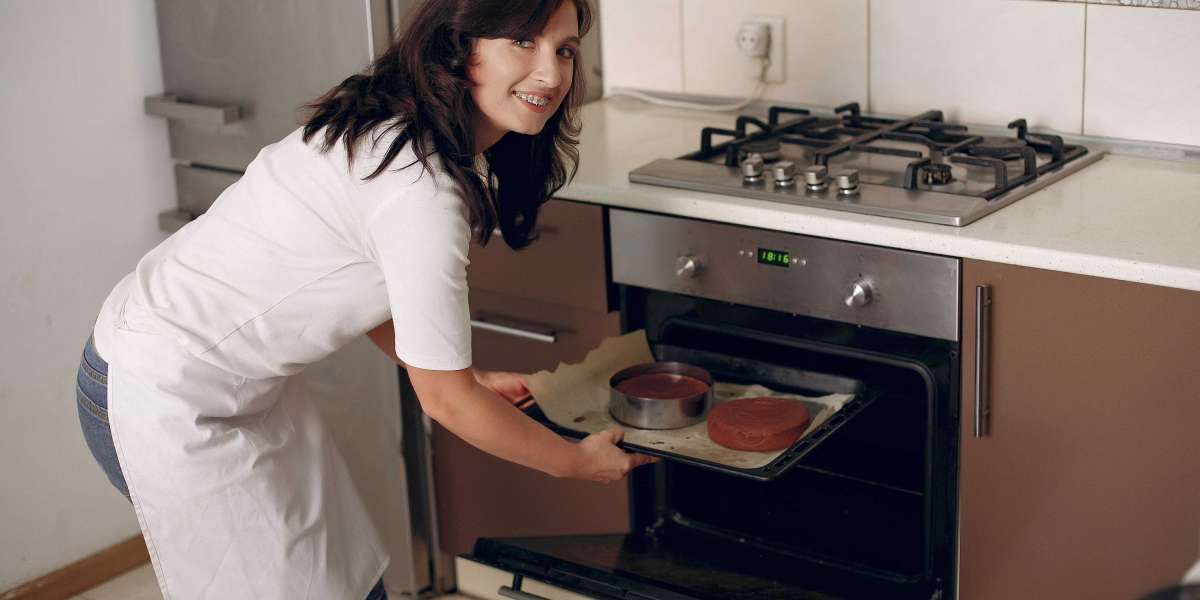The Rise of Built-In Ovens: A Comprehensive Guide
On the planet of contemporary kitchens, built-in ovens have actually carved a niche for themselves, transforming both the functionality and visual appeal of cooking spaces. This post looks into the many benefits of built-in ovens, their installation factors to consider, and a contrast with traditional freestanding designs.
Comprehending Built-In Ovens
Built-in ovens are designed to be integrated perfectly into kitchen cabinetry, providing a sleek and advanced look. Unlike freestanding models, which sit on the flooring, built-in ovens are mounted at eye level or under counter tops, making them ergonomic and simple to gain access to.
Types of Built-In Ovens
Built-in ovens come in a number of types, each dealing with different cooking needs and preferences. Here's a brief introduction:
- Single Built-In Oven: Ideal for smaller cooking areas, providing sufficient cooking area for a lot of needs.
- Double built in oven for sale-In Oven: Offers different compartments for cooking, perfect for larger families or those who regularly amuse guests.
- Steam Ovens: Utilizes steam cooking for much healthier meals, maintaining nutrients and moisture.
- Convection Ovens: Equipped with fans to circulate hot air equally, ensuring much faster and more consistent cooking.
| Type | Description | Best for |
|---|---|---|
| Single Built-In | One roomy oven built in compartment | Small families |
| Double Built-In | Two compartments for synchronised cooking | Large households |
| Steam Oven | Steam-based cooking method | Health-conscious cooks |
| Convection Oven | Fan-assisted cooking for even heat circulation | Those who bake typically |
Advantages of Built-In Ovens
Aesthetic Appeal
Built-in ovens supply a streamlined, integrated appearance that boosts the overall appearance of a kitchen. They are available in various designs and surfaces that can complement existing cabinets and decoration, creating a streamlined and cohesive appearance.
Area Efficiency
Created to fit perfectly into kitchen styles, built-in ovens can conserve valuable floor area, making them ideal for smaller sized kitchens. By conserving area, property owners can benefit from additional storage choices or more counter area for cooking.
Ergonomics
Setting up ovens at eye level eliminates the requirement to flex down, reducing strain when looking at food or eliminating hot dishes. This ergonomic advantage is particularly beneficial for people with movement difficulties.
Adaptability
Built-in ovens typically feature a variety of cooking modes and features, from convection cooking to self-cleaning choices, providing users versatility in their cooking methods.
Energy Efficiency
Modern built-in ovens are usually developed to be more energy-efficient than traditional models. Functions such as better insulation and advanced heating aspects assist reduce energy intake.

Installation Considerations
While the benefits of built-in ovens are significant, specific aspects require to be thought about before choosing this kitchen upgrade:
Space Requirements: Built-in ovens require particular area measurements in regards to width, height, and depth. Precise dimensions must be considered to avoid setup issues.
Electrical and Gas Hookups: Built-in ovens might need specific electrical wiring setups or gas connections. Qualified experts must manage this installation to make sure security and compliance with regional codes.
Cabinets Compatibility: The design and structure of existing kitchen cabinetry should be examined. Built-in models might necessitate modifications to kitchen cabinetry, or new cabinetry might require to be designed to accommodate them.
Expense: Built-in ovens generally come at a premium cost compared to freestanding models. Property owners ought to examine their budget plans appropriately and think about long-lasting advantages.
Setup Steps
Below are the standard actions involved in installing a built-in Cookology COF600BK 60cm Black Electric Oven - Buy Now!:
- Preparation: Measure the area and get rid of old appliances if required.
- Electrical/Gas Setup: Ensure the needed electrical or gas connections are prepared and examined for compliance.
- Cabinet Adjustment: Modify cabinetry as required to fit the built in oven uk-in oven.
- Positioning: Carefully place the oven into the designated area and level it.
- Connection: Connect the oven to power or gas and make sure all fittings are secure.
- Evaluating: Turn on the oven to guarantee it runs correctly.
Often Asked Questions (FAQs)
1. Are built-in ovens easy to set up?
While standard installation can be handled by a useful person, it is advisable to employ an expert, especially when dealing with electrical or gas fittings.
2. Can I replace my freestanding oven with a built-in oven?
Yes, but it will need careful measurement and possibly some modifications to your existing kitchen cabinetry to fit the built-in design.
3. How do built-in ovens affect kitchen resale value?
Built-in ovens can enhance a kitchen's appeal, often making it more appealing to potential purchasers, thus supporting a greater resale value.
4. Are built-in ovens more costly than freestanding models?
Generally, built-in ovens are more pricey due to their style and features. However, their boosted aesthetic appeals and functionality might validate the cost for many house owners.

5. What are the best brands for built-in ovens?
Some recognized brand names include Bosch, Miele, KitchenAid, and Electrolux, each known for their quality and development.
Built-in ovens represent a significant leap in kitchen technology, using a blend of style, efficiency, and performance. While they require cautious factor to consider concerning space, installation, and expense, the benefits they supply make them an attractive option for modern-day homeowners. Whether updating an existing kitchen or designing a new one from scratch, built-in ovens can raise the cooking experience and boost general kitchen aesthetics. From functionality to elegance, they truly embody the best of modern cooking solutions.








